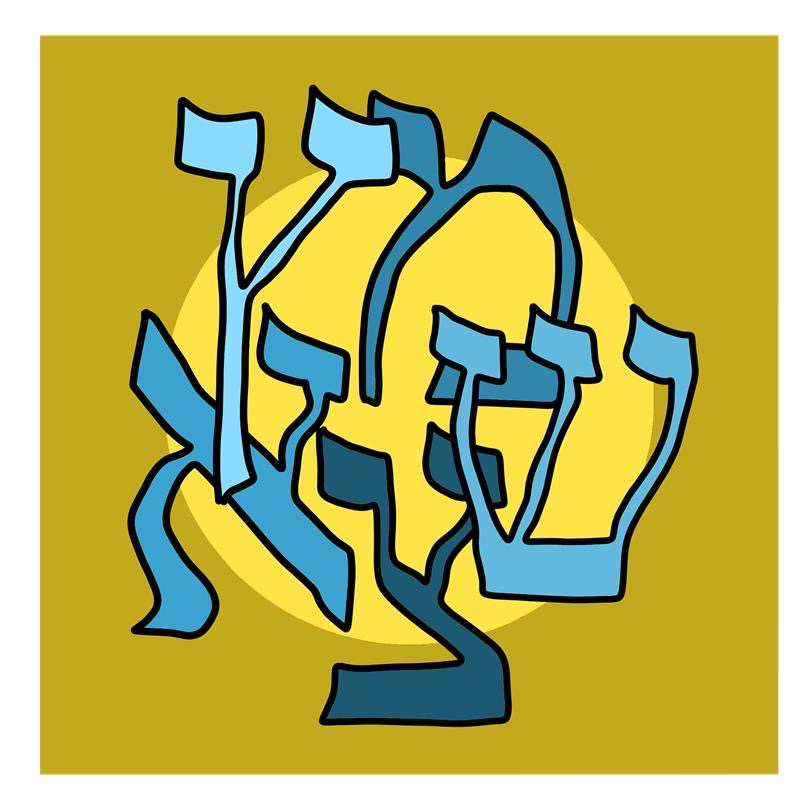
Anasthasia Shilov, Illustrations Editor
Starting next fall, Yalies can schmooze, kibitz and kvetch for a language credit.
Currently, there is one main course sequence for Yiddish — a language historically used by Eastern European Jews that combines German, Hebrew and words from languages of the surrounding countries. Today, Yiddish is still spoken in some communities, mainly in Israel, Russia, parts of Eastern Europe and the United States. The existing sequence contains two courses. The first course, “Reading Yiddish,” is cross-listed in German and Judaic Studies. A more advanced course, “Reading Yiddish II,” is offered when there is enough student interest. Occasionally, visiting professors come to teach other courses about the language, such as a spring 2020 course entitled “Desire in Yiddish Literature.”
But none of these courses can be taken to fulfill the University’s language requirement. That will change next semester with the offering of an L1 Yiddish class.
“I’m very excited about these changes,” Maurice Samuels, chair of the Program in Judaic Studies, wrote to the News in an email. “Most of our peer institutions teach Yiddish language and I’ve long felt that it was time for Yale to do so as well. Yale is a center for the study of Jewish history and the Holocaust and Yiddish is central to those disciplines.”
Joshua Price, the current lector for the “Reading Yiddish” sequence and the only faculty member who currently teaches Yiddish, will also be teaching the new courses. He plans to teach L1 Yiddish in the fall and ideally an L2 option in the spring. Beyond that, he says, faculty and administrators have not finalized plans, but Price hopes to ultimately offer an L3 and L4 option and even more upper-level courses beyond that.
Price and Samuels, with feedback and help from a few other faculty members, helped draft a proposal for Yiddish to be considered for language credit over winter break. In February, they submitted it to the Language Study Committee, which, according to Samuels, was “enthusiastic” about the idea.
According to Tamar Gendler, dean of the Faculty of Arts and Sciences, Yalies had recently begun organizing their own meetings to practice conversational Yiddish and had also expressed a desire to formalize a Yiddish language sequence.
“This, combined with the longer recent-ish history of Yiddish being taught here, convinced us that it was a good time to experiment with the possibility of an L1/L2 Yiddish sequence, along with the reading course,” Gendler wrote in an email to the News. “We have decided to situate the Yiddish language sequence within the Germanic Languages and Literatures department so that it once again will offer multiple Germanic languages, and so that our lecturer — who was trained at the long-standing Yiddish program at Columbia University — will have a larger community of experienced lectors to participate in.”
She added that in addition to coordinating with the Hebrew program for students who might want to take both languages, administrators and faculty hope to gauge student interest in the short term and use that information to determine how the program will look in the future.
McKinsey Crozier ’22 took “Reading Yiddish I” and “Desire in Yiddish Literature” and is currently enrolled in “Reading Yiddish II.” She called the changes “super exciting” and noted that the current Yiddish offerings focus on “passive engagement” with the language, such as reading and listening, instead of the more active speaking and writing that the L1 course is set to emphasize.
While the “Reading Yiddish” sequence will continue to be offered, its emphasis will remain on translation, making it more geared toward graduate students who want to learn Yiddish for research purposes. According to Price, undergraduates who have completed one or two semesters of “Reading Yiddish” could likely place into L2, L3, or even higher-level courses of the new Yiddish language sequence.
In addition to the close reading skills emphasized by the current Yiddish course offerings, the new L1 course will focus on “unscripted, idiomatic conversation” and “expressive writing” through labor anthems, love songs, poetry, folktales and even Twitter, according to the course description.
“It also lowers barriers for students who may be interested in Yiddish because it will now count for a language distributional requirement instead of an elective and allows students to access Yiddish-speaking courses as part of their regular course load rather than taking on the additional cost or stress associated with extracurricular Yiddish courses,” Crozier added.
Maayan Schoen ’23, who took “Reading Yiddish I” and audited part of “Reading Yiddish II,” grew up studying Yiddish with her grandfather and found committing a course to the language “totally worthwhile.”
“I hope that having a language status increases its legitimacy in the eyes of people at Yale,” Schoen said. “[Students] won’t hesitate and say ‘Oh, is this just something I should be getting from my bubbe’s house at the Passover seder.’”
For Giovanna Truong ’23, who is a staff illustrator for the News, offering Yiddish for language credit is the first step toward what she hopes could become a full-fledged Yiddish department with multiple professors and additional courses on the intersection of Yiddish with religion, secularism, Marxism and more.
But, more than anything, Truong is just happy that Yiddish is receiving broader recognition.
“This language deserves your attention,” Truong said. “It’s beautiful, and I really think it is a perfect literary language because of how much meaning you can convey just through word choice.”
The “Yiddish for Reading” course was first offered in 2015, before which students could take Yiddish through the Directed Independent Language Study program.
Madison Hahamy | madison.hahamy@yale.edu







